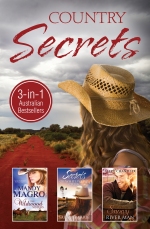 I bought a copy of A Loving, Faithful Animal by Josephine Rowe at Megalong Books in Leura a couple of weeks ago after hearing the author interviewed on ABC radio. During the interview, Rowe read an extract conveying the repercussive horror experienced by one of her characters, Lani, after witnessing a rape during her teenage years. In the book, something seemingly innocuous triggers Lani to a flashback of the abuse, forcing her to hide until the nausea and horror subsides. Rowe’s prose was so crisp, the emotion so accurately evoked, that I instantly recognised that she had suffered what many adult survivors of childhood abuse have suffered, what some call “traumatic witness”. In the interview Rowe spoke of the trauma of having grown up with an abusive father who, in turn, had been traumatised by the Vietnam war; somehow Rowe not only survived, but also found the language, the imagery and form to transmute those horrors into powerful fiction.
I bought a copy of A Loving, Faithful Animal by Josephine Rowe at Megalong Books in Leura a couple of weeks ago after hearing the author interviewed on ABC radio. During the interview, Rowe read an extract conveying the repercussive horror experienced by one of her characters, Lani, after witnessing a rape during her teenage years. In the book, something seemingly innocuous triggers Lani to a flashback of the abuse, forcing her to hide until the nausea and horror subsides. Rowe’s prose was so crisp, the emotion so accurately evoked, that I instantly recognised that she had suffered what many adult survivors of childhood abuse have suffered, what some call “traumatic witness”. In the interview Rowe spoke of the trauma of having grown up with an abusive father who, in turn, had been traumatised by the Vietnam war; somehow Rowe not only survived, but also found the language, the imagery and form to transmute those horrors into powerful fiction.
A Loving, Faithful Animal is told sequentially from the points of view of Ru, her mother Evelyn, her father Jack, her sister Lani and her uncle Les, with Ru’s story, the only one told in the second person, bookending the novel. Each character has a distinctive voice, their narratives intersecting during a shared period, New Year’s Eve 1990, a time shadowed by the Iraq war and still haunted by Vietnam, the war Ru’s father brings daily into the family’s living room.
Your father. His head is a ghost trap. It’s all he can do to open his mouth without letting them all howl out. Even so, you can still see them, sliding around the dark behind his eyes like a Balinese puppet show. At night he’ll let his guard down. Too bad for everyone. Now he’s out here somewhere. Wasting his New Year’s Eve in a shabby, forgetful room… (p12)
In a time when domestic violence is high on the national agenda, Rowe gives an insight into the family dynamics of abuse, including a sympathetic – but not sentimental – portrait of the abuser and the abused, as well as the effects on the children and extended family. It’s not an easy read; there’s little in the way of comfort; but it has the compelling ring of truth.
~
Author: Josephine Rowe
Title: A Loving, Faithful Animal
Publisher: UQP, 2016
ISBN: 9780702253966
This review forms part of my 2016 Australian Women Writers Challenge.

 Wild Chicory by Kim Kelly is a novella-length celebration of stories, family and migration. Each of its chapters has a theme, indicated by the chapter title: for example, “Good White Bread”, “The Fire Trail” and “The Little Milk Maid”; each presents a snippet of life of the Kennedys, an Irish-Australian family, as they migrate from their ancient rural home in County Kerry in the early part of last century, to the streets of Surry Hills – with scenes reminiscent of Ruth Park’s Harp in the South – and beyond. Threading through the stories is the image of “wild chicory”, a plant that figures in both countrysides, and comes to symbolise both the wildness of the characters and the tales they tell, and the connections between generations over time.
Wild Chicory by Kim Kelly is a novella-length celebration of stories, family and migration. Each of its chapters has a theme, indicated by the chapter title: for example, “Good White Bread”, “The Fire Trail” and “The Little Milk Maid”; each presents a snippet of life of the Kennedys, an Irish-Australian family, as they migrate from their ancient rural home in County Kerry in the early part of last century, to the streets of Surry Hills – with scenes reminiscent of Ruth Park’s Harp in the South – and beyond. Threading through the stories is the image of “wild chicory”, a plant that figures in both countrysides, and comes to symbolise both the wildness of the characters and the tales they tell, and the connections between generations over time. After finishing
After finishing 

